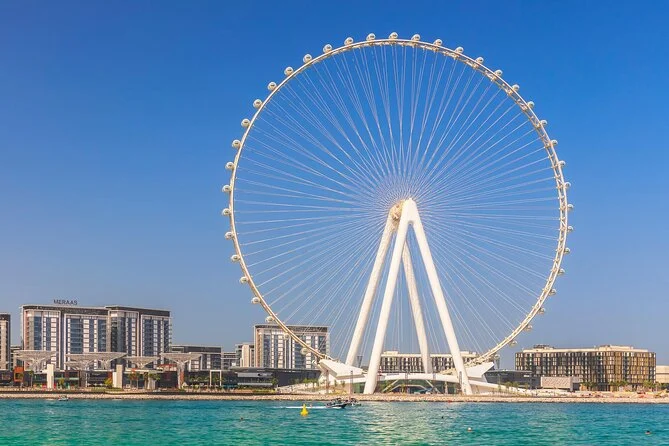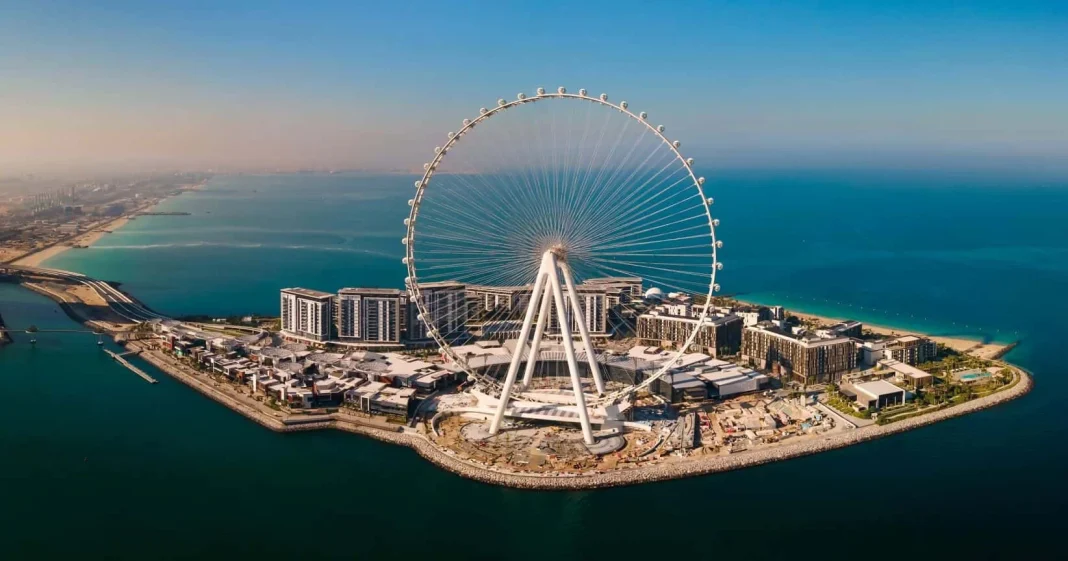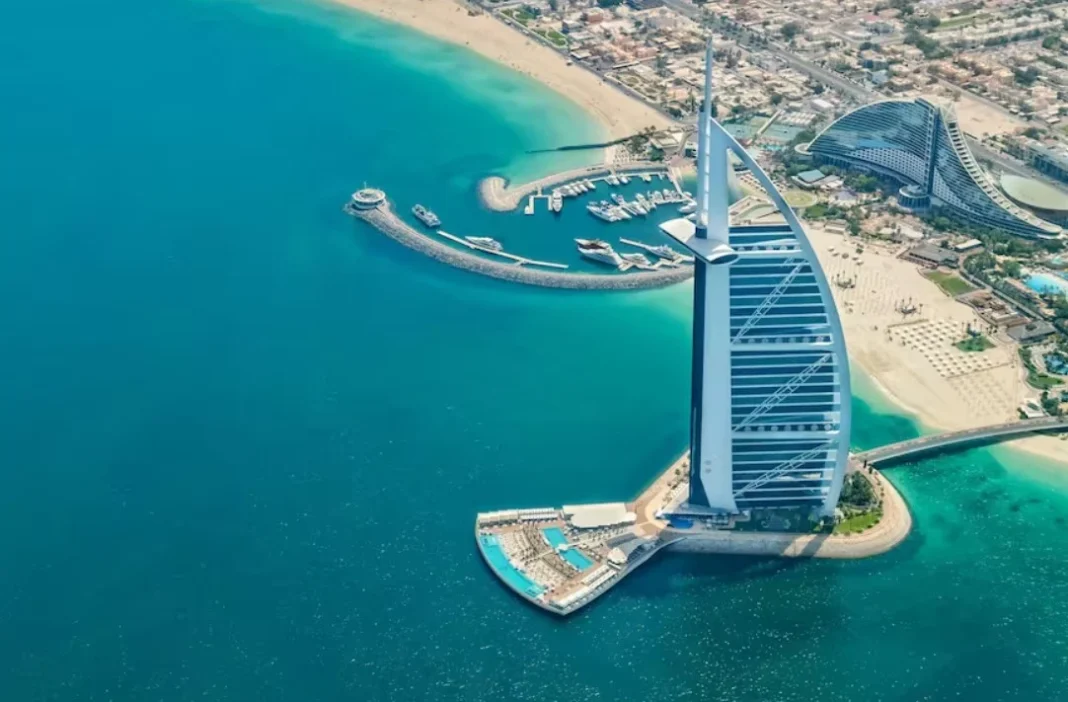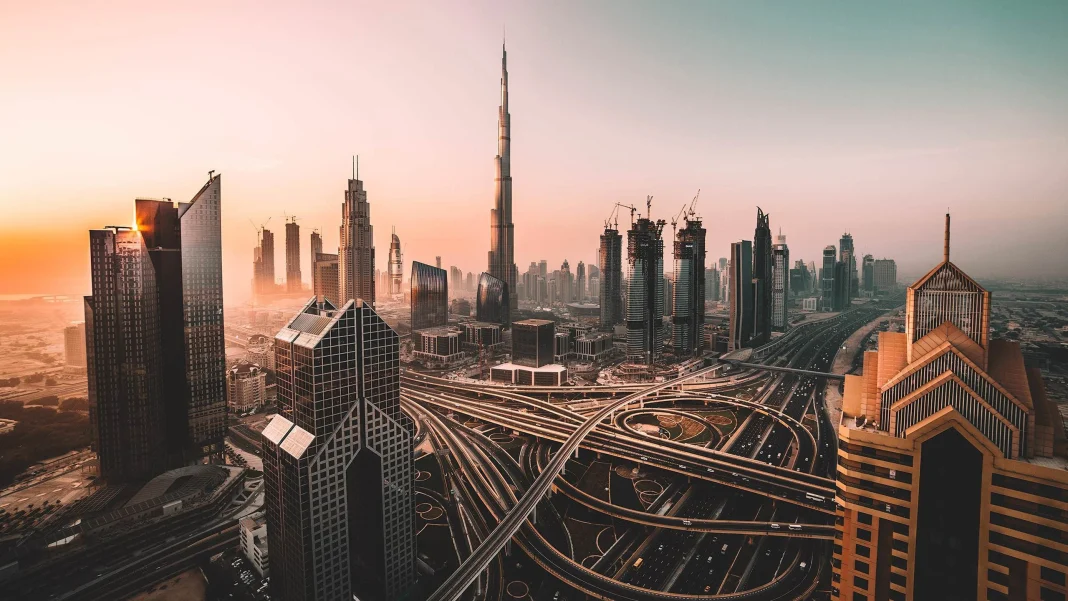The imposing Ain Dubai, the largest observation wheel in the world, remains closed. Its silhouette, a symbol of architectural ambition and Dubai’s tourism development, stands silently over Bluewaters Island, an enigma for visitors and a concern for investors. The announcement of its indefinite closure, initially expected to be a brief refurbishment, has generated uncertainty in the tourism sector and raised questions about the management of this iconic project.
The closure of Ain Dubai is not a mere setback; it represents a challenge to Dubai’s image as a cutting-edge tourist destination. The city, known for its innovation and ability to attract large-scale investments, faces the uncertainty of when this attraction, which became a magnet for tourists from around the world during its brief period of operation, will reopen. The lack of a specific reopening date creates uncertainty, affecting not only potential visitors but also investor confidence in large-scale projects in the region. We will analyze the possible factors that have contributed to this situation and its implications for the future.
The economic impact of the closure of Ain Dubai.

The prolonged closure of Ain Dubai has a significant economic impact, not only for the attraction itself but also for the tourism sector in Dubai in general. It is estimated that the wheel generated a considerable amount of revenue through ticket sales, retail, and complementary services. The loss of this income directly affects employees, local businesses that collaborated with the attraction, and ultimately, Dubai’s economy. The uncertainty surrounding the reopening also discourages new investments in similar projects, creating a domino effect in the sector.
The lack of transparency regarding the reasons for the prolonged closure also generates distrust among investors. Investment in large-scale tourism projects requires careful planning and efficient risk management. The case of Ain Dubai highlights the importance of clear communication and proactive problem management to maintain investor confidence and avoid significant economic losses. The lack of accurate information about the situation can negatively affect the perception of Dubai as a safe and reliable destination for investments.
The situation of Ain Dubai serves as a reminder of the inherent risks associated with large investments in the tourism sector. Dependence on external factors such as political and economic stability, as well as efficient project management, are crucial for success. An analysis of this case can serve as a lesson for future investment projects in the region, emphasizing the need for thorough planning and effective risk management.
The reasons behind the prolonged closure: an analysis
Although official information is limited to “improvement works,” the exceptional duration of Ain Dubai’s closure has sparked speculation about possible causes. Some experts point to unexpected technical issues that could require complex and costly repairs. Others suggest possible delays in obtaining permits or resolving regulatory issues. Regardless of the real cause, the lack of transparent communication has fueled uncertainty and raised concerns among stakeholders.
The lack of clear and timely communication from management has contributed to the spread of rumors and speculation. In a competitive environment like tourism, transparency and effective communication are crucial to maintaining public and investor trust. The lack of accurate information has generated distrust and negatively impacted the image of the attraction and Dubai as a tourist destination. More effective crisis management could have mitigated the negative impact of the closure.
The case of Ain Dubai underscores the importance of planning and risk management in large-scale projects. A thorough assessment of potential problems and the implementation of contingency plans are essential to minimize the impact of unexpected events. The lack of foresight in this case has had significant consequences, affecting the local economy and Dubai’s image as a top-tier tourist destination. More proactive management could have avoided the prolonged uncertainty surrounding the closure of the wheel.
The future of Ain Dubai and implications for tourism in Dubai.

The reopening of Ain Dubai is crucial for the recovery of the tourism sector in Dubai. The attraction represents a significant investment and its prolonged closure has had a negative impact on the local economy. A quick and efficient reopening, with a clear and transparent communication strategy, is essential to regain the trust of visitors and investors. The success of the reopening will depend on the management’s ability to address the causes of the closure and ensure a safe and high-quality experience for visitors.
The experience of Ain Dubai serves as a lesson for the tourism development of Dubai and the United Arab Emirates in general. Careful planning, effective risk management, and transparent communication are crucial factors for the success of large-scale projects. The government of Dubai must learn from this situation to improve the management of future tourism projects and ensure the sustainability of the sector. Investment in high-quality tourism infrastructure is essential to maintain Dubai’s competitiveness in the global market.
The reopening of Ain Dubai, when it finally occurs, will be a crucial moment to assess the impact of the prolonged closure and determine the lessons learned. The experience will serve as a case study for future investment projects in the tourism sector, highlighting the importance of planning, risk management, and transparent communication. The future of Ain Dubai and its impact on Dubai’s tourism will depend on the authorities’ ability to effectively manage the situation and regain the trust of visitors and investors. The Ferris wheel must once again become a symbol of innovation and dynamism in Dubai.



